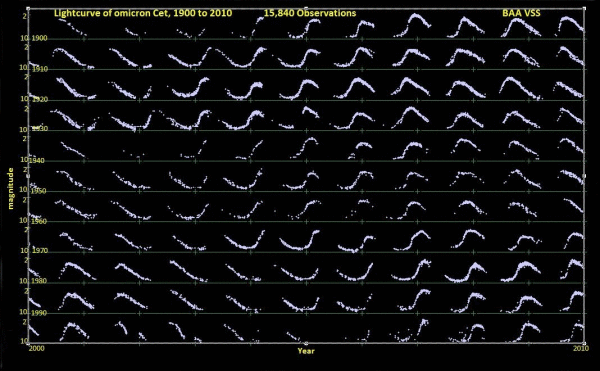“To be is to be the value of a variable.” –Willard Van Orman Quine
Those constant, fixed points of light in the night sky -- the stars -- turn out not to be so constant if you looked with great precision at them. A star like our Sun varies in brightness, periodically, by about 0.1% over the span of a few years, but many stars vary by 99% or more from brightest to dimmest.
 Image credit: British Astronomical Association Variable Star Section, via http://www.britastro.org/vss/.
Image credit: British Astronomical Association Variable Star Section, via http://www.britastro.org/vss/.
For centuries, we knew of only a handful of these objects, yet now they're known to be commonplace. What causes this spectacular behavior, how did we discover it and what's the physical mechanism underlying it?
Come learn about the science of variable stars on this edition of Throwback Thursday!
More like this
"Billions of years from now our sun, then a distended red giant star, will have reduced Earth to a charred cinder." -Carl Sagan
“Aristotle taught that stars are made of a different matter than the four earthly elements— a quintessence— that also happens to be what the human psyche is made of. Which is why man’s spirit corresponds to the stars.
it is raining, might as well liveblog the morning session...
runaway mergers of colliding stars - the quick and dirty intro...
stars are, in fact extended bodies.
This is mostly irrelevant to astronomers, since typical stellar separations are very large.
"Everyone must leave something behind when he dies, my grandfather said. A child or a book or a painting or a house or a wall built or a pair of shoes made. Or a garden planted.


Well, as far as I'm aware, there are three types of variable.
Inherently variable. Stars that change their luminosity.
Multistar variables. Objects that change their luminosity because they appear to be a singe object when they are not.
Occulted variables. Stars that have their brightness changed by having something dark move in front of them.
I think that WOW is Ethan's alter ego.
Not a chance.
I thoroughly enjoyed the whole article. Thanks!